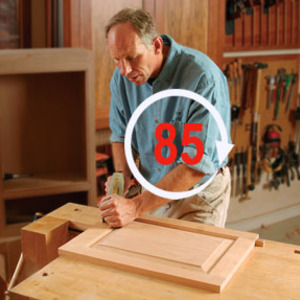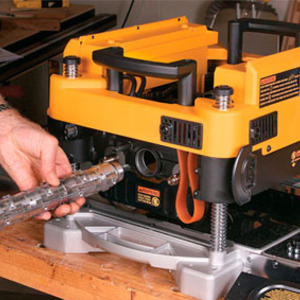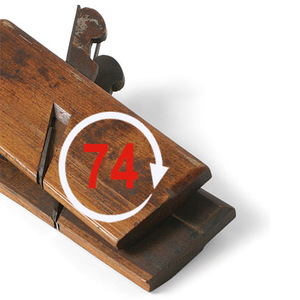
This week, we "hit the road," by debuting a new segment dubbed Road Stories, where the finest-traveled woodworking editors dish out on their weirdest, wildest work-related travel tales. Plus, your woodworking questions answered.
 |
Every two weeks, a team of Fine Woodworking staffers answer questions from readers on Shop Talk Live, Fine Woodworking’s biweekly podcast. Send your woodworking questions to [email protected] for consideration in the regular broadcast!
Click on the link at left to listen to the podcast, or catch it in iTunes. Remember, our continued existence relies upon listener support. So if you enjoy the show, be sure to leave us a five-star rating and maybe even a nice comment on our iTunes page. And don’t forget to send in your woodworking questions to [email protected].
Shop Talk Live 52: A Hit Man in the Workshop?
![]() This week on Shop Talk Live, a listener’s voicemail on Ed’s phone got us thinking about a recent discussion on dealing with infest-laden wood. Exactly how many ways can you kill a bug?
This week on Shop Talk Live, a listener’s voicemail on Ed’s phone got us thinking about a recent discussion on dealing with infest-laden wood. Exactly how many ways can you kill a bug?
Then, we debut a brand-new segment titled Road Stories, where the finest-traveled woodworking editors dish out on all sorts of weird, wild, and wacky stories from the road. Plus, your questions on pricey handplanes, the merits of sanding, shooting boards, and more.
Links from this Week’s Show
The Only Finish You’ll Ever Need
How to Build Your Own Front Door























Comments
Mr. Finn's article shows one way to build a front door.
If I was building it for my home, I'd use wedged through tenons, rather than the blind/pinned variety.
I'm not sure I find your road stories that interesting.
Guys -- Flea plays Needles in BTTF Parts II and III. In the unlikely event that you don't know, Flea is best known as the bass player in the Red Hot Chili Peppers.
Love the show. Keep it going!
DWS11: THAT flea? I had no idea he was in any of the subsequent movies. Interesting. LOL
Cheers,
E
dzj: Your comment cracked me up. I must admit to not having any rock and roll stories that involve the trashing of hotel rooms - we're woodworkers after all, not rock stars. ha ha ha. Well, guess we'll have to try harder next time around!
Cheers and thanks for listening.
Best,
Ed
For the guy asking about the Lie-Nielsen planes - Yes, they are that good, and better. But having more planes may work better for you. Try one before you make the change. If I could afford them I'd have a whole shop full, but in the mean time i'll make good use of all my Stanley planes.
To quote from FWW #172 "There is a well-kept secret in fine
cabinetmaking. Most new planes should be treated as a kit of parts, not as a tool ready for fine work."
The one thing that you didn't address in your analysis about whether someone should trade in their collection of Stanley planes with Hock blades for Lie Nielsen planes is the fact that the owner had upgraded the planes with Hock blades. While Lie Nielsen planes are great out of the box, and a joy to use, they are not likely to be light years ahead of a properly tuned Stanley, that has had an upgraded Hock or Lie Nielsen blade installed, particularly if the chip breaker has been replaced as well, IMHO. If the inquirer has really tuned up his planes, and upgraded the blades, I would suggest starting out with a Lie Nielsen 4 or a 4 1/2 before he sells off of his entire his collection.
Hi Guys!
The discussion about hide glue is mostly correct however I'd like to make a comment to help with Hide glue's image! There are two types of hide glue, the first and best for furniture or instrument work is marketed as ground hide glue and is actually ground into small particles and includes only protein from the animal's hide. This type of hide glue has virtually no "road kill" odor and is really almost odorless if kept at or near 140 degrees. It is available in a wide range of strengths and even the lower strengths are as strong as the wood it is applied to if handled properly. As you mentioned there is furniture made several hundred years ago that is every bit as solid today as it was the day it was made.
The second type of hide glue is marketed as pearl hide glue and looks like little brown pearls before it is dissolved into water. Pearl hide glue is made from animal protein and includes protein from the hide, organs and bone of the animal and it stinks! It is in my experience not as clear as ground hide glue thus less useful for fine furniture or instrument making. It may be every bit as strong as ground hide glue but it smells so bad I don't use it at all!
Another thing to know about hide glue, dogs love the smell of either one! Our Golden Retrievers show up in the shop the minute the glue pot is plugged in! They walk around with their noses up in the air sniffing and licking at the air so make sure you are working on a surface above nose level or you run the risk of having your fuzzy friends lick the glue off as fast as you apply it! It won't hurt them as it is non-toxic, hide glue is actually used to put the shiny finish on those rawhide chew toys so don't worry about them licking up a drip here and there!
Keep up the great work guys!
Madison2
You don't have to hire a hit man or shop for an oversize ziplock bag to put your infested wood in.Use the chemical cyfluthrin. I have used it on infested wood with excellent results. Have also used on a piece of antique furniture that was infested. I use CyKick CS mixed 2 fl. oz./gallon water. Spray the ends while the lumber is stacked, and then spray both sides of each board wetting thoroughly. I also use it to spray under, around, and sometimes inside the house twice a year. It is not a kill on contact insecticide, but is effective for 6 months or so. It is safe enough suppliers send it through the mail. No bad smell. You can get it premixed as Bayer Home Pest Control, or at TruValu or Ace hardware. But it is MUCH cheaper to buy from an internet supplier (such as Do My Own Pest Control) in concentrated form and mix in a deck sprayer.
Log in or create an account to post a comment.
Sign up Log in